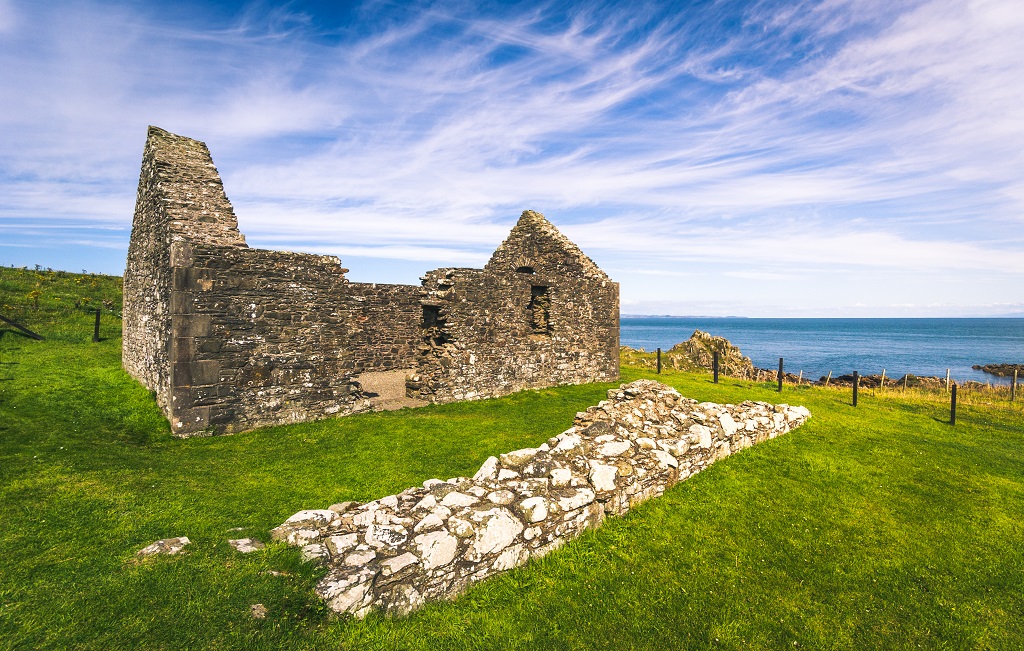
10 fascinating facts about… Stranraer and Galloway
In the south-west of the country, it might be easy to forget about Stranraer and the Galloway area, with them being slightly off the beaten track when it comes to Scotland’s main transport network.
But it’s an area full of natural beauty, with stunning coastlines, historic locations and friendly people.
Here’s 10 fascinating facts about the area.
It is thought that the name of Stranraer is derived from the Gaelic ‘An t-Sròn Reamhar’ which means ‘the fat nose’, but others have translated it as ‘the broad headland’.
Although Stranraer is best known as being the ferry port town connecting Scotland with Northern Ireland, it actually stopped in November 2011 when the service was moved to Cairnryan, six miles to the north of Stranraer.
The Belted Galloway derives from the Galloway cattle of the Galloway region, and was established as a separate breed in 1921. It recently became at the centre of a Twitter discussion after ITV’s Robert Peston wondered what breed they were.
Stranraer FC were kept in the dark for many years – their home of Stair Park was the last senior football club in Britain to have floodlights installed, when they were first switched on in 1981.

St Ninian’s Chapel at the Isle of Whithorn
The earliest Christian monument which can be found in Scotland is the Latinus stone at Whithorn, which dates from around the fifth century. One of the oldest buildings still standing in Galloway is St Ninian’s Chapel, which was first erected in the 1100s for the benefit of both local worshippers and pilgrims to St Ninian’s Shrine at Whithorn. The chapel that stands today is a rebuild from around 1300.
We don’t associate Scotland as being the warmest place in the world, but in July 1908, record temperatures were recorded in the Stranraer area, hitting 91 degrees Fahrenheit/32.7 degrees Celsius.
Scotland’s most southerly point, the Mull of Galloway, is actually further south than Hartlepool in the north of England.
Stranraer’s North West Castle, which was built in 1820 by Sir John Ross, was the first hotel in the world to have its own indoor curling ice rink. It can still be used today.
Since 2017, the Stranraer Oyster Festival has been held, as a celebration of Scotland’s wild, native oysters, as Loch Ryan is one of the last locations where they can be found.
Author and naturalist Gavin Maxwell loved the area. A bronze otter erected at Monreith on top of a cliff, near to St Medan’s Golf Club, commemorates Midge, from his book Ring of Bright Water.
- Click HERE to read 10 fascinating facts about Aberdeen
- Click HERE to read 10 fascinating facts about Aberdeenshire
- Click HERE to read 10 fascinating facts about Ardnamurchan
- Click HERE to read 10 fascinating facts about Argyll
- Click HERE to read 10 fascinating facts about Arran
- Click HERE to read 10 fascinating facts about Ayrshire
- Click HERE to read 10 fascinating facts about Blair Atholl
- Click HERE to read 10 fascinating facts about Callander
- Click HERE to read 10 fascinating facts about Dunoon and Dunblane
- Click HERE to read 10 fascinating facts about Dumfries and Galloway
- Click HERE to read 10 fascinating facts about Dundee and Angus
- Click HERE to read 10 fascinating facts about East Lothian
- Click HERE to read 10 fascinating facts about Edinburgh
- Click HERE to read 10 fascinating facts about Falkirk
- Click HERE to read 10 fascinating facts about Fife
- Click HERE to read 10 fascinating facts about Glasgow
- Click HERE to read 10 fascinating facts about Inverness
- Click HERE to read 10 fascinating facts about Lanarkshire
- Click HERE to read 10 fascinating facts about Largs
- Click HERE to read 10 fascinating facts about Lochaber
- Click HERE to read 10 fascinating facts about Loch Lomond and the Trossachs
- Click HERE to read 10 fascinating facts about Mid Argyll
- Click HERE to read 10 fascinating facts about Moray
- Click HERE to read 10 fascinating facts about Mull
- Click HERE to read 10 fascinating facts about Oban and Argyll
- Click HERE to read 10 fascinating facts about Orkney
- Click HERE to read 10 fascinating facts about Perth.
- Click HERE to read 10 fascinating facts about Perthshire
- Click HERE to read 10 fascinating facts about Ross-shire
- Click HERE to read 10 fascinating facts about Royal Deeside
- Click HERE to read 10 fascinating facts about Skye
- Click HERE to read 10 fascinating facts about Speyside
- Click HERE to read 10 fascinating facts about Stirling
- Click HERE to read 10 fascinating facts about The Borders
- Click HERE to read 10 fascinating facts about The Cairngorms
- Click HERE to read 10 fascinating facts about The Isle of Bute
- Click HERE to read 10 fascinating facts about The Outer Hebrides
- Click HERE to read 10 fascinating facts about West Lothian
TAGS

